Every fact you need to know about France's 'départements'

France is divided into 101 administrative regions called "départements" - and here are 31 facts that tell you everything you need to know.
1. Only 96 of the departments are in mainland France.
2. The five others are French Guiana in South America, Guadeloupe in the Caribbean, Martinique in the Caribbean, Mayotte in the Indian Ocean, and Réunion in the Indian Ocean.
3. The average population of a department is 524,144.
4. That's 21 times the population of a US county.
5. And less than two thirds the size of a ceremonial county in the UK.
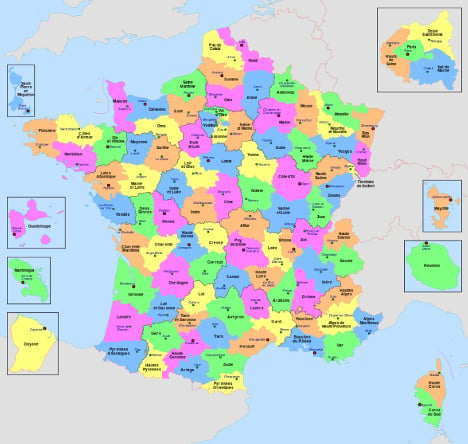 The 101 departments of France. Click here for a larger version. Photo: Nilstilar/WikiCommons
6. The biggest by population is Nord with around 2.6 million people.
7. Paris is the second-most populated with 2.2 million inhabitants.
8. The least populated is Lozère in southern France with just 77,000 people.
9. The biggest, in terms of size, is French Guiana at 83,535 square kilometres.
10. ... while the biggest in mainland France is Gironde in the west at 10,725 square kilometres.
The 101 departments of France. Click here for a larger version. Photo: Nilstilar/WikiCommons
6. The biggest by population is Nord with around 2.6 million people.
7. Paris is the second-most populated with 2.2 million inhabitants.
8. The least populated is Lozère in southern France with just 77,000 people.
9. The biggest, in terms of size, is French Guiana at 83,535 square kilometres.
10. ... while the biggest in mainland France is Gironde in the west at 10,725 square kilometres.
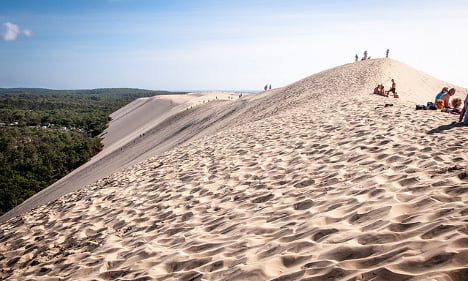 The incredible Dune de Pyla in Gironde. Photo: Archigeek/Flickr
11. The smallest is Paris at a poxy 105 square kilometres.
12. But Paris is the most densely populated with 21,234 people per square kilometre.
13. The Paris department was actually called Seine until 1968, named after the river. It's one of the very few named after a city.
14. Want to avoid the crowds? Head to the least densely populated in mainland France, which is Lozère with just 15 people per square kilometre.
The incredible Dune de Pyla in Gironde. Photo: Archigeek/Flickr
11. The smallest is Paris at a poxy 105 square kilometres.
12. But Paris is the most densely populated with 21,234 people per square kilometre.
13. The Paris department was actually called Seine until 1968, named after the river. It's one of the very few named after a city.
14. Want to avoid the crowds? Head to the least densely populated in mainland France, which is Lozère with just 15 people per square kilometre.
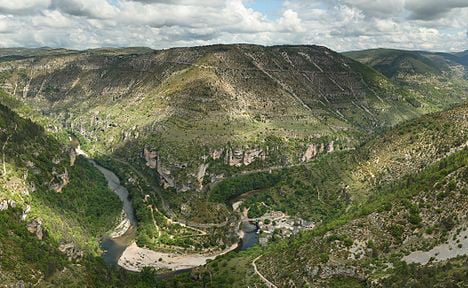 That's what a village in Lozère looks like (Saint-Chély-du-Tarn). Photo: Benh Lieu Song/WikiCommons
15. Three departments have just three letters in their names, Var, Ain, and Lot.
16. The departments were originally listed alphabetically, starting with Ain at 01.
17. As the number of departments grew (and also shrank), the alphabetic order has been somewhat ruined (but Ain is still 01).
That's what a village in Lozère looks like (Saint-Chély-du-Tarn). Photo: Benh Lieu Song/WikiCommons
15. Three departments have just three letters in their names, Var, Ain, and Lot.
16. The departments were originally listed alphabetically, starting with Ain at 01.
17. As the number of departments grew (and also shrank), the alphabetic order has been somewhat ruined (but Ain is still 01).
 The view from Le Grand Colombier in Ain. Photo: will_cyclist/Flickr
18. The two-digit numbers, such as 75 for Paris, are used in the postcodes.
19. The first map of departments was created back in 1791.
20. President Francois Hollande aimed to get rid of the departmental divisions by 2020, though the plan was abandoned.
21. 68 departments are named after a local river, such as Loire in central France.
22. 12 are named after a mountain or a mountain range, such as Vosges in the east.
The view from Le Grand Colombier in Ain. Photo: will_cyclist/Flickr
18. The two-digit numbers, such as 75 for Paris, are used in the postcodes.
19. The first map of departments was created back in 1791.
20. President Francois Hollande aimed to get rid of the departmental divisions by 2020, though the plan was abandoned.
21. 68 departments are named after a local river, such as Loire in central France.
22. 12 are named after a mountain or a mountain range, such as Vosges in the east.
 The Vosges mountain range. Photo: Alexandra Toulouse/Flickr
23. Six are named after islands (four of the overseas territories, and Corsica's Corse-du-Sud and Haute Corse).
24. Only one is named according to a compass point, Nord ("North") which is, you guess it, in the north.
25. Finistère, on the west coast, comes from the words "fin" and "terre" meaning the end of the earth (and hence where the water begins).
26. Côte-d'Or, which literally translates as "golden slope", is the only department not named after some form of geography. A local MP came up with the name in 1789 in honour of the golden leaves on the sloping vineyards.
The Vosges mountain range. Photo: Alexandra Toulouse/Flickr
23. Six are named after islands (four of the overseas territories, and Corsica's Corse-du-Sud and Haute Corse).
24. Only one is named according to a compass point, Nord ("North") which is, you guess it, in the north.
25. Finistère, on the west coast, comes from the words "fin" and "terre" meaning the end of the earth (and hence where the water begins).
26. Côte-d'Or, which literally translates as "golden slope", is the only department not named after some form of geography. A local MP came up with the name in 1789 in honour of the golden leaves on the sloping vineyards.
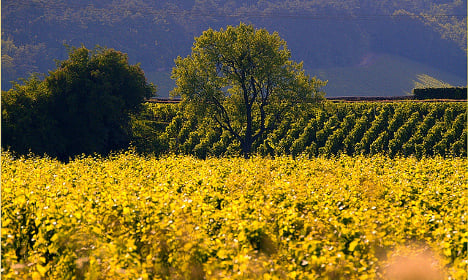 The golden slopes of the Côte d'or. Photo: Lautergold/Flickr
27. There were once 130 departments as the First French Empire extended, but Napolean's defeat in 1814-1815 brought the number back again to 86.
28. Var, in the south, is named after the Var river, even though the Var river doesn't run through Var.
29. There's a department called Cher in central France, but it has nothing to do with the singer of the same name. In fact, the department was named in 1790 after the Cher river.
The golden slopes of the Côte d'or. Photo: Lautergold/Flickr
27. There were once 130 departments as the First French Empire extended, but Napolean's defeat in 1814-1815 brought the number back again to 86.
28. Var, in the south, is named after the Var river, even though the Var river doesn't run through Var.
29. There's a department called Cher in central France, but it has nothing to do with the singer of the same name. In fact, the department was named in 1790 after the Cher river.
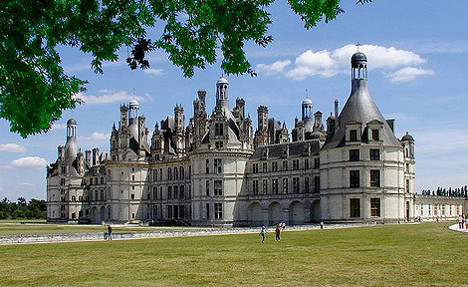 The Château de Chambord on the Cher river. Photo: Daniel Jolivet/Flickr
30. The most poverty stricken is Seine-Saint-Denis in Greater Paris where the poverty rate is 20.7 percent. (The poverty line is set at 60 percent of the median standard of living in France, which in 2012 amounted to €987 a month.)
31. Yvelines in the south west of Paris is the least hit by poverty, with just 8.2 percent below the poverty line.
The Château de Chambord on the Cher river. Photo: Daniel Jolivet/Flickr
30. The most poverty stricken is Seine-Saint-Denis in Greater Paris where the poverty rate is 20.7 percent. (The poverty line is set at 60 percent of the median standard of living in France, which in 2012 amounted to €987 a month.)
31. Yvelines in the south west of Paris is the least hit by poverty, with just 8.2 percent below the poverty line.
Comments
See Also
1. Only 96 of the departments are in mainland France.
2. The five others are French Guiana in South America, Guadeloupe in the Caribbean, Martinique in the Caribbean, Mayotte in the Indian Ocean, and Réunion in the Indian Ocean.
3. The average population of a department is 524,144.
4. That's 21 times the population of a US county.
5. And less than two thirds the size of a ceremonial county in the UK.
 The 101 departments of France. Click here for a larger version. Photo: Nilstilar/WikiCommons
The 101 departments of France. Click here for a larger version. Photo: Nilstilar/WikiCommons
6. The biggest by population is Nord with around 2.6 million people.
7. Paris is the second-most populated with 2.2 million inhabitants.
8. The least populated is Lozère in southern France with just 77,000 people.
9. The biggest, in terms of size, is French Guiana at 83,535 square kilometres.
10. ... while the biggest in mainland France is Gironde in the west at 10,725 square kilometres.

The incredible Dune de Pyla in Gironde. Photo: Archigeek/Flickr
11. The smallest is Paris at a poxy 105 square kilometres.
12. But Paris is the most densely populated with 21,234 people per square kilometre.
13. The Paris department was actually called Seine until 1968, named after the river. It's one of the very few named after a city.
14. Want to avoid the crowds? Head to the least densely populated in mainland France, which is Lozère with just 15 people per square kilometre.

That's what a village in Lozère looks like (Saint-Chély-du-Tarn). Photo: Benh Lieu Song/WikiCommons
15. Three departments have just three letters in their names, Var, Ain, and Lot.
16. The departments were originally listed alphabetically, starting with Ain at 01.
17. As the number of departments grew (and also shrank), the alphabetic order has been somewhat ruined (but Ain is still 01).
 The view from Le Grand Colombier in Ain. Photo: will_cyclist/Flickr
The view from Le Grand Colombier in Ain. Photo: will_cyclist/Flickr
18. The two-digit numbers, such as 75 for Paris, are used in the postcodes.
19. The first map of departments was created back in 1791.
20. President Francois Hollande aimed to get rid of the departmental divisions by 2020, though the plan was abandoned.
21. 68 departments are named after a local river, such as Loire in central France.
22. 12 are named after a mountain or a mountain range, such as Vosges in the east.
 The Vosges mountain range. Photo: Alexandra Toulouse/Flickr
The Vosges mountain range. Photo: Alexandra Toulouse/Flickr
23. Six are named after islands (four of the overseas territories, and Corsica's Corse-du-Sud and Haute Corse).
24. Only one is named according to a compass point, Nord ("North") which is, you guess it, in the north.
25. Finistère, on the west coast, comes from the words "fin" and "terre" meaning the end of the earth (and hence where the water begins).
26. Côte-d'Or, which literally translates as "golden slope", is the only department not named after some form of geography. A local MP came up with the name in 1789 in honour of the golden leaves on the sloping vineyards.

The golden slopes of the Côte d'or. Photo: Lautergold/Flickr
27. There were once 130 departments as the First French Empire extended, but Napolean's defeat in 1814-1815 brought the number back again to 86.
28. Var, in the south, is named after the Var river, even though the Var river doesn't run through Var.
29. There's a department called Cher in central France, but it has nothing to do with the singer of the same name. In fact, the department was named in 1790 after the Cher river.
 The Château de Chambord on the Cher river. Photo: Daniel Jolivet/Flickr
The Château de Chambord on the Cher river. Photo: Daniel Jolivet/Flickr
30. The most poverty stricken is Seine-Saint-Denis in Greater Paris where the poverty rate is 20.7 percent. (The poverty line is set at 60 percent of the median standard of living in France, which in 2012 amounted to €987 a month.)
31. Yvelines in the south west of Paris is the least hit by poverty, with just 8.2 percent below the poverty line.
Join the conversation in our comments section below. Share your own views and experience and if you have a question or suggestion for our journalists then email us at [email protected].
Please keep comments civil, constructive and on topic – and make sure to read our terms of use before getting involved.
Please log in here to leave a comment.